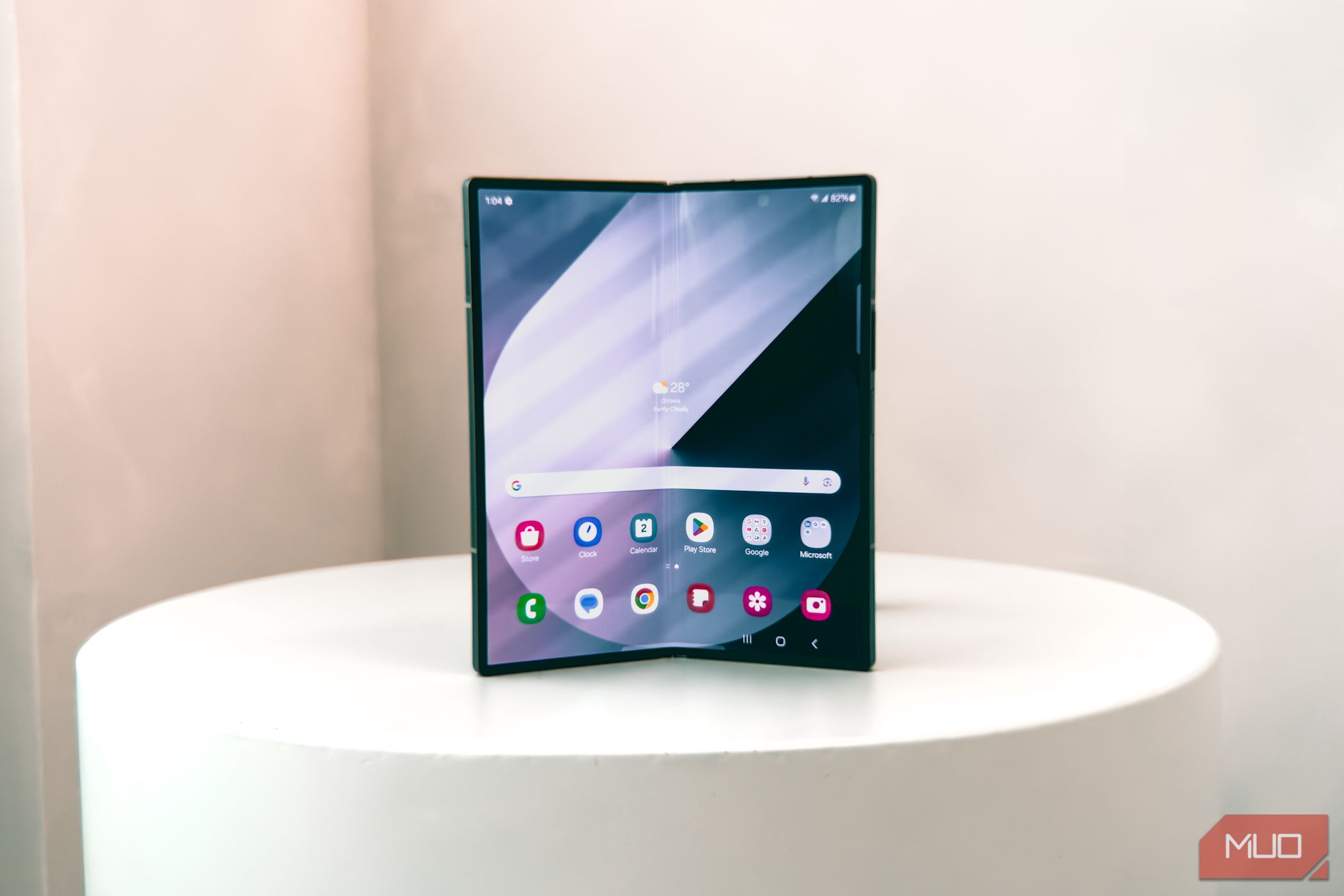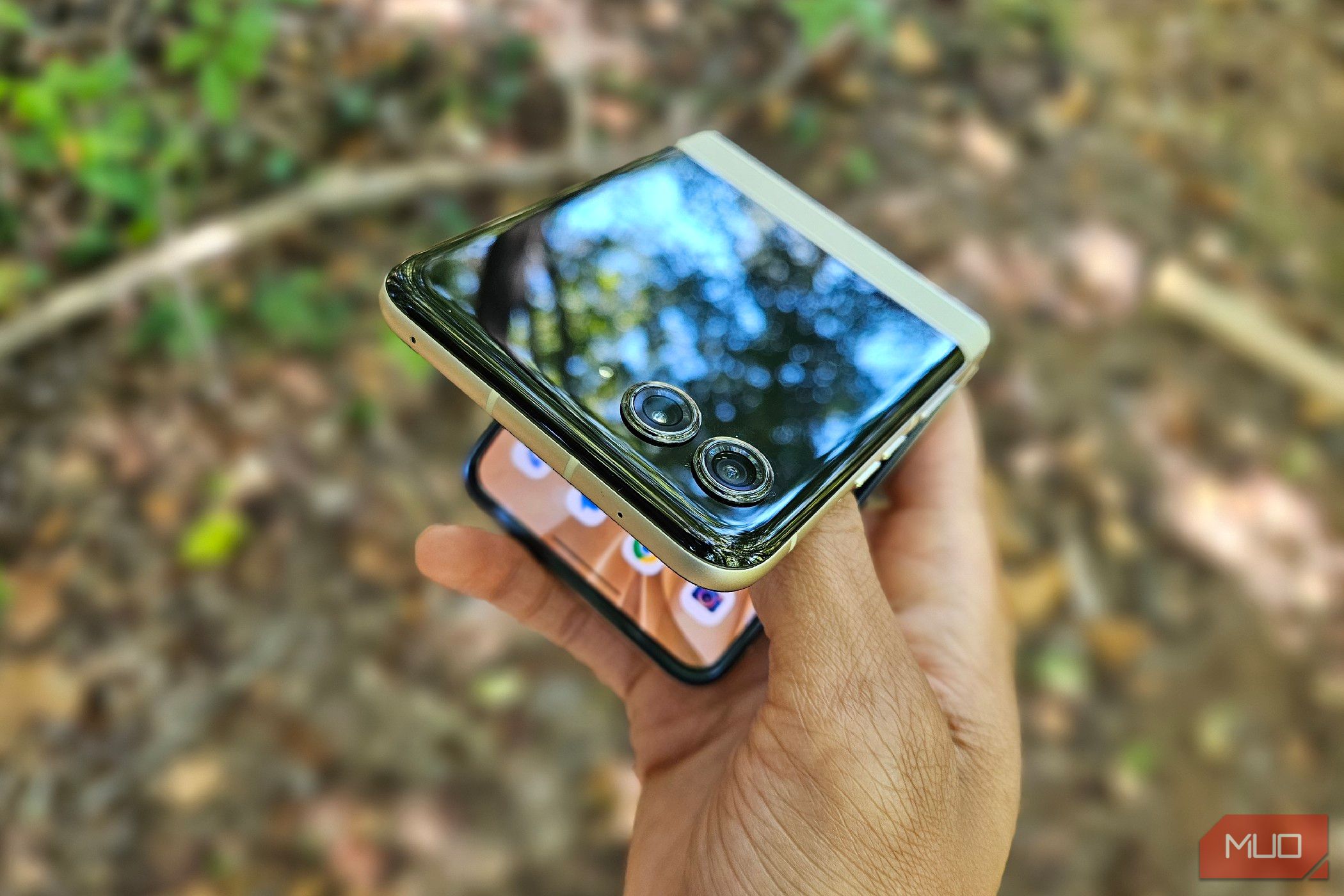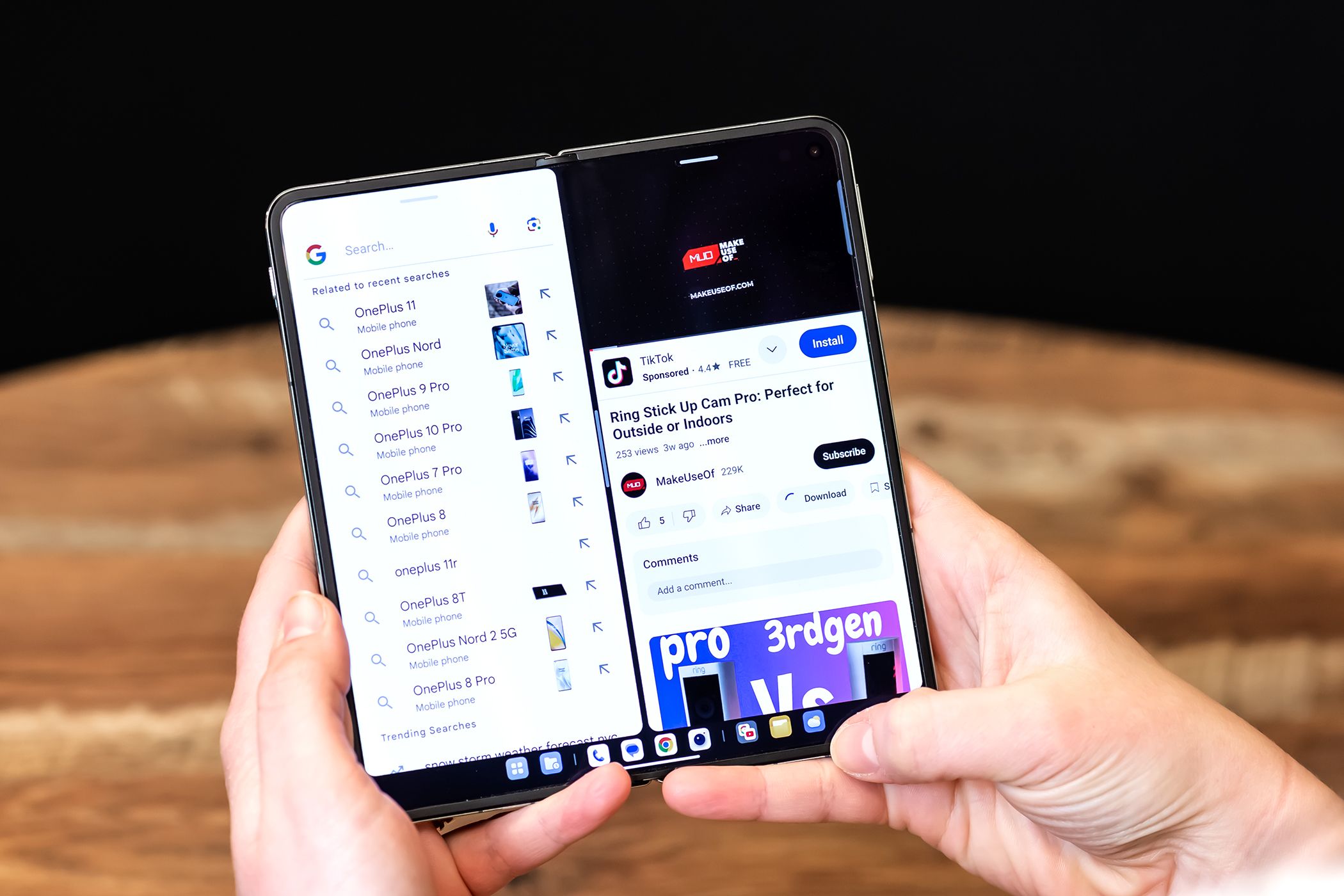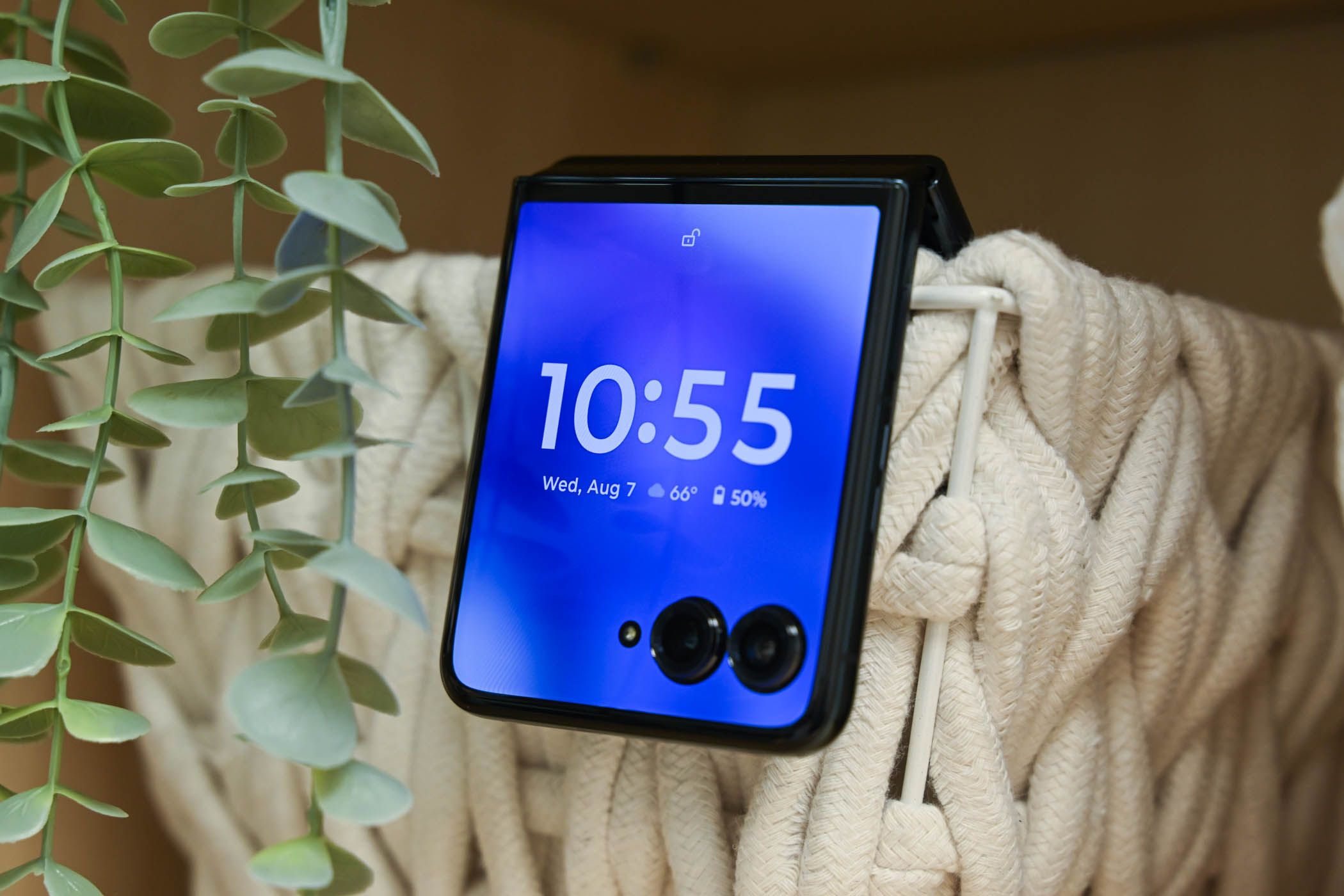Buying your first foldable phone is a big step, and you’re probably excited to experience a new form factor after using boring glass slabs for years. But before you press the buy button, there are some things you should consider to know exactly what you’re really getting into.
6
Are You Buying It for Leverage or Luxury?
The end goal of foldable phones is to combine the utility of smartphones and tablets so that you can use your phone like normal most of the time but can switch over to the bigger screen when it’s time to get some serious work done. That’s the leverage side of the equation. You’re buying a foldable phone expecting it to enhance your productivity and contribute to (at least partly) paying itself off.
That means you’re relying heavily on using multitasking features to get more done, like split-screen view, pop-up windows, and picture-in-picture mode. Companies are also increasingly finding clever ways to make better use of the extra space. Samsung’s TaskBar, for instance, does a great job of making Galaxy Fold phones feel more like Windows computers.
OnePlus’ Open Canvas feature takes a fresh approach to multitasking. It runs two apps in split-screen mode, occupying almost the entire screen estate, while a third app hangs at the bottom for quick access. In practice, it feels like your apps are pinned to a giant whiteboard, allowing you to switch back and forth quickly. It’s really intuitive.
If you’re a business professional, Microsoft Office apps work beautifully on larger screens since that’s what they were designed for. Using Excel, Word, or PowerPoint on a regular phone is not a great experience, but it is on a foldable phone. If you’re a day trader, reading candlestick charts to analyze stock price movements is easier on a larger screen, too.
Of course, enhanced productivity is not the only reason one considers a foldable phone. You’ll also want to use the bigger screen to fully immerse yourself while gaming, streaming video, or reading manga, which are perfectly valid pursuits.

Related
I Use a Foldable as My Daily Driver: Here’s Why I Love It
I don’t think I can ever go back to a slab phone now.
However, before spending close to $2000, take a moment to reflect on your motivation. Are you seeking a practical tool to enhance productivity, or are you drawn by the allure of owning a cutting-edge gadget? I’m not saying the latter shouldn’t have a place in your buying decision, but the former is much easier to justify, especially given the price.
Flip phones are cheaper. However, they are almost entirely about luxury because they don’t enhance your productivity in any meaningful way, unless you’re a content creator. In which case, you’ll love having the ability to stand your phone upright wherever you want to shoot reels, or use the main camera to take high-res selfies—something book-style foldables also do, but for twice the price.
5
Can You Handle the Repair Costs?
No matter the claims the company makes about how tough its folding phone is, don’t expect it to be as durable as a regular flagship. The crease of the inner screen, in particular, will keep becoming more prominent through everyday use. You’ll probably want to be extra careful near water or sand to protect the hinge, even with a higher IP rating.
Foldable phones are much harder and more expensive to repair, and people often forget to factor in these repair costs at the time of purchase. In fact, replacing the inner screen alone costs about a third or, in extreme cases, up to half of the launch price of the device.
Regular phones use many standardized parts that are cheaper to produce and easier to source, but foldable phones are still a very new invention in the grand scheme. Therefore, they require custom parts that repair shops don’t always have at hand.
Scratch that; even if they did have the parts, the technical expertise required to repair a foldable phone is very scarce given the additional complexity, so your only option would likely be to mail your device to the official manufacturer. The whole process will likely take several days, if not an entire week or longer.
In comparison, getting a regular phone repaired is as easy as walking into a nearby authorized service center and waiting a few hours while the technician replaces the screen.
I don’t want all this to discourage you from buying your first foldable phone. Instead, I suggest assuming your phone will require some repair at some point and setting aside a dedicated budget for that from the get-go so that if and when a repair is required, it doesn’t feel like an unwanted surprise.
4
Are Your Favorite Apps Optimized for Foldables?
As I mentioned earlier, part of the appeal of buying a foldable phone is the ability to consume media on a larger screen. However, there’s a problem here. Foldable phones are in this awkward space right now where they are not thin enough when folded to count as a regular phone but also not wide enough when unfolded to count as a proper tablet.
In other words, the inner screen has more of a square aspect ratio than a rectangular one, which is what movies and shows are shot at and for which most apps are optimized.
In practice, this means you’ll most likely have giant black bars at the top and bottom when trying to watch videos, and the actual size of the videos won’t feel that much bigger than what you get on, say, the 6.9-inch Galaxy S25 Ultra. Of course, you can pinch to zoom and fill the whole screen, but that cuts content from the ends, ruining your media experience. It’s one of the worst things about owning a foldable phone.
Similarly, if the apps you use most often are not optimized for this aspect ratio, then having all that extra space might not result in a better experience. Google is trying its best to get developers on board (and many already have), going so far as to rank apps higher on the Play Store that support the new form factor. Still, I’d advise that you check this yourself to be sure.
3
Are You Okay With Carrying a Bulkier Phone for Years?
Flip phones are light and weigh about the same as a regular phone, but book-style foldables are often considerably thicker (when folded) and heavier. This makes them less comfortable during everyday use, especially if you have smaller hands. Of course, you’re getting a lot of screen estate in return for all the extra heft, but remember that you will have to bear this heft for several years in a row.
Samsung has admittedly done a good job of reducing the weight of its Fold series with every generation, to the point where the Fold 6 is 239 grams—that’s light for a folding phone but still heavier than the iPhone 16 Pro Max, which many complain is too bulky.
I know weight and thickness are probably the last things you think about when buying a foldable, but they do matter. When the device is folded shut, you want it to feel as close to a regular phone as possible. Also, don’t forget that slapping on a case adds even more bulk to an already unwieldy device.
Even if you get used to the extra weight over time, you will most certainly find the thickness a bit bothersome when it forms a giant bump when stowed in your pocket. Fortunately, companies are aware of this issue and are working on reducing thickness further as we speak, such as the Oppo Find N5, which is the world’s slimmest folding phone.
2
How Practical Is the Cover Display?
Depending on whether you buy a flip phone or a book-style foldable, your expectations with the cover screen will vary. For the latter, the use case is well-defined: the cover screen should resemble a regular phone as much as possible, and most folding phones already do this.
But things get a little messy when you opt for a flip phone because their cover screens are much smaller and marketed as a way for you to use your phone less. If you’re among the growing number of people looking to reduce their screen time, the extra effort required to flip your phone open might be just enough resistance to stop you from opening attention-hoarding apps like Instagram or TikTok.
However, cover screens have gotten increasingly bigger over the years, to the point where you can now run almost any app on them, which defeats the whole purpose of the form factor.

Related
The 5 Major Drawbacks of Flip Foldables I Didn’t Expect
Now that I have first-hand experience using them, I know what to expect.
I also think there’s a fundamental problem with using flip phones to reduce screen time. You’re essentially using a technological solution to fix a behavioral problem, and that doesn’t always work because you can always find loopholes.
What I find more effective in reducing screen time is hiding tempting apps from the app drawer so they’re out of sight and switching the display to Grayscale, making it intentionally boring.
1
Can You Make Do With Worse Battery Life?
Given their size, you’d think foldable phones would have plenty of room inside their chassis to fit a massive battery. But a lot of that space is actually occupied by the hinge, and in the pursuit of making these devices thinner, you lose even more valuable internal space.
In fact, Samsung hasn’t changed the battery size of its Fold series (4400mAh) since 2021 when it launched the Galaxy Fold 3. And this problem isn’t exclusive to Samsung; the Google Pixel 9 Pro Fold has a 4650mAh cell, and the OnePlus Open a 4805mAh one, which is better but still lower than the 5000mAh we’ve all come to associate as the standard.
This sucks because the larger inner screen is what you’re buying the phone for, but it also uses far more energy. So you’re constantly in this dilemma of whether to save battery life and use the cover screen or take advantage of the very feature you paid extra for.
This is still a fixable problem in the long run as the smartphone industry transitions to new silicon-carbon batteries, which are more energy-dense and can hence pack more juice in the same footprint. In fact, the Vivo X Fold3 Pro already uses this tech and offers a respectable 5700mAh battery.
Of course, this doesn’t seem that exciting now that some Chinese brands are already offering up to 8000mAh, such as the Honor Power, but the general trend seems to be in our favor.
If battery life is really important to you, which it most likely is, then you might want to wait for Samsung or Google to adopt the tech. Apple is also expected to launch its first foldable phone in 2026, although I doubt the company will use new and, hence, potentially risky battery tech for a first-generation product that millions are waiting for.
Foldable phones are engineering marvels, but they are not meant for everyone. The latest iterations are indeed tough, but they are still plagued by long-standing problems associated with the form factor, including screen crease, inferior battery life, awkward aspect ratio, and excess thickness and weight.









Leave a Comment
Your email address will not be published. Required fields are marked *